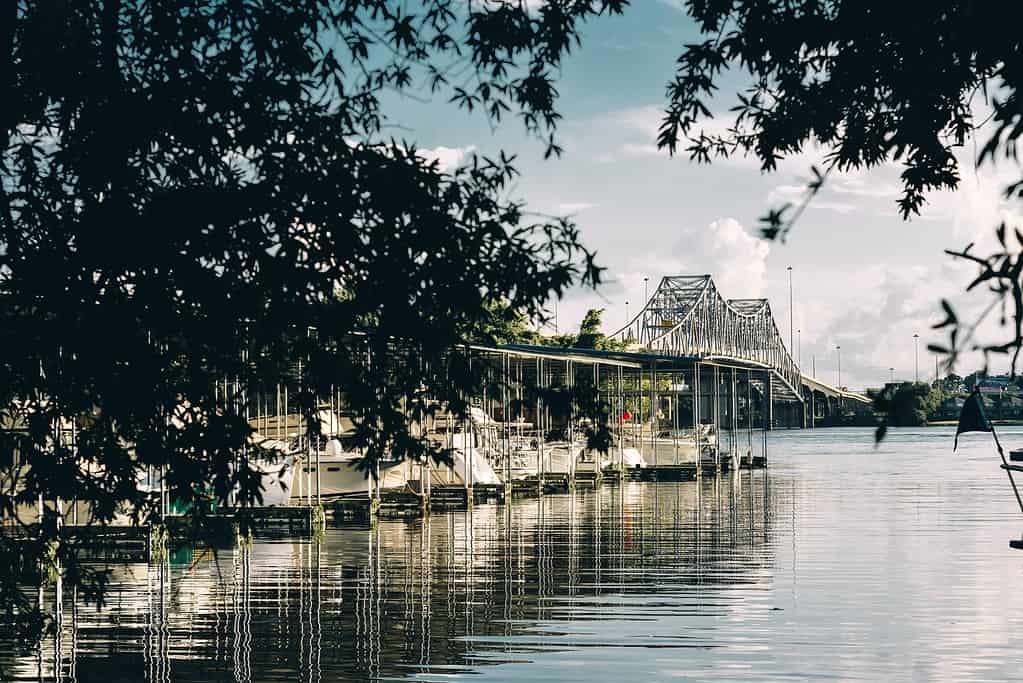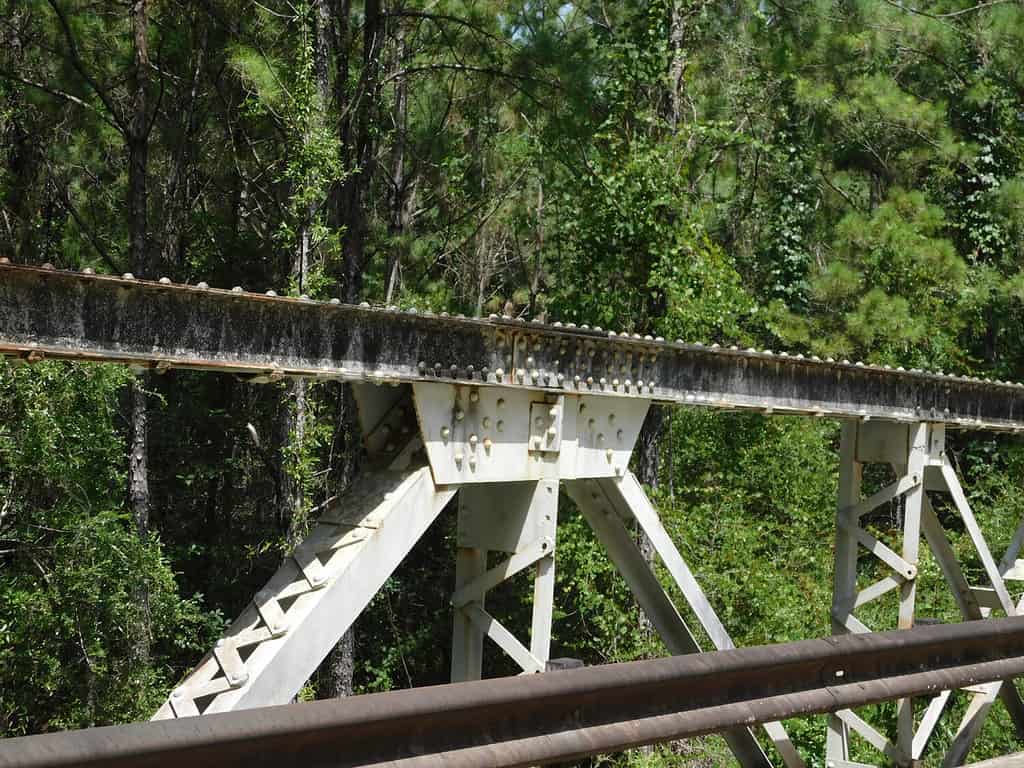Most Traveled Bridges in Alabama In Desperately Poor Condition
Bridges are critical pieces of infrastructure. They allow drivers to cross waterways and roadways. They are crucial aspects of daily life, getting people from point A to point B. The state of Alabama has 16,176 bridges. The state has identified needed repairs on 16,102 bridges. Out of this total, 559, or 3.5 percent, are considered structurally deficient in Alabama. This means a key element is in poor or worse condition. This number is down from 2019. At that time, 654 bridges were in desperately poor condition. Alabama stands at no. 44 in the United States for the percentage of structurally deficient bridges. That number is much better than most of the United States, but one might argue that number is still too large.

©Wirestock/iStock via Getty Images
The age of Alabama’s bridges averages 47 years old. This is a little higher than the national average of 44 years old. The typical life expectancy is 50 years. However, bridges built after 2013 have a life expectancy of 75 years. Alabama is home to more than 8,255 bridges that are 50 years or older.
In the article, we will define structurally deficient. Then we will look at Alabama’s infrastructure. Lastly, we will list the top 10 bridges in Alabama that are most traveled and structurally deficient.
What Does Structurally Deficient Mean?
Alabama ensures bridges are inspected by the Federal Highway Administration (FHWA) National Bridge Inspection Standards (NBIS). Major bridge components — bridge deck, superstructure, and substructure — can be classified on a scale of 0 to 9. These ratings determine a bridge’s condition. If the lowest rating is greater than or equal to 7, the bridge is good. Bridges rated 5 or 6 are fair. If it is less than or equal to 4, the classification is poor. Structurally deficient means the deck, superstructure, or the substructure is rated a 4 or less.

©Emmie_Binks/Shutterstock.com
State of Alabama Infrastructure
In 2022, Alabama received a C- rating for its infrastructure from the American Society of Civil Engineers (ASCE). This is the same result as the 2015 report card.
The 2015 report card spoke about efforts to pass the Rebuild Alabama Act. The act awarded more than $100 million in state transportation funds since it began in 2019. The act provides an additional 10 cents per gallon to the state fuel tax to help close the funding gap for Alabama’s roads and bridges. This funding helped stabilize Alabama’s roads and bridges. The portion of poor-rated bridges saw significant improvement, decreasing from more than 8.6% in 2015. The national average is 7.5%.
However, there is still a funding shortfall of $113 million. More than 2,200 of the state’s bridges have weight restrictions, which slows down the supply chain. 14 percent of bridges can’t allow fully loaded semi-tractor trailers, dump trucks, or concrete trucks to pass over them.
Rebuild Alabama Act
This year, Alabama Gov. Kay Ivey announced more than $2.25 million was awarded to cities and counties for various road and bridge projects. The funding is made available through a program created under the Rebuild Alabama Act. The program sets aside $10 million off the top of the state’s share of new gas tax revenue for local projects.
“For several years now, Rebuild Alabama has been the bedrock of progress, and our state continues to see its transformative impact,” Gov. Kay Ivey said. “We are taking tangible steps toward safer, more efficient travel, and there is more to come.”
Of the awarded projects, cities, and counties also contributed over $2.3 million in local funds. With this round of awarded state funding, more than $141 million in state transportation funding has been awarded through the local grant programs created by the Rebuild Alabama Act. Projects have been awarded in all 67 counties.
Federal Funding for Infrastructure
The Infrastructure Investment and Jobs Act (IIJA) was signed into law by President Joe Biden in November 2021. The act authorizes $1.2 trillion for transportation and infrastructure spending with $550 billion of that going to “new” investments. The IIJA will provide more than $170 billion in funding over the next five years in Alabama. This includes $55 billion to upgrade the nation’s water infrastructure, such as drinking water systems within Alabama where many have aged well beyond their intended lifespans.
Over the life of the IIJA, Alabama will receive a total of $225 million in bridge formula funds, which will help make needed repairs. Alabama currently has access to $90 million and has committed $87.3 million toward 20 projects, as of June 2023.
Most Traveled Structurally Deficient Bridges in Alabama
| County | Year Built | Daily Crossings | Bridge Type | Location |
|---|---|---|---|---|
| Jefferson | 1981 | 99,312 | Urban Interstate | I-459 South over Cahaba River |
| Jefferson | 1968 | 41,990 | Urban Interstate | I-20/59 North over Aaron Aronov Drive |
| Jefferson | 1968 | 41,990 | Urban Interstate | I-20/59 South over Arron Aronov Drive |
| Lee | 1958 | 40,660 | Urban Interstate | I-85 over Moores Mill Creek |
| Lee | 1996 | 32,040 | Urban freeway/expressway | US 280 over First Avenue |
| Baldwin | 1968 | 31,822 | Urban other principal arterial | US 98 over Fly Creek |
| Macon | 1963 | 31,250 | Rural Interstate | I85 over Branch |
| Shelby | 1924 | 28,511 | Urban other principal arterial | Al – 3 North over Peavine Ck * Acl RR |
| Lee | 1959 | 23,680 | Urban Interstate | I-85 over Long St |
| Lee | 1959 | 23,680 | Urban Interstate | I-85 over Norfolk Southern R/R |









